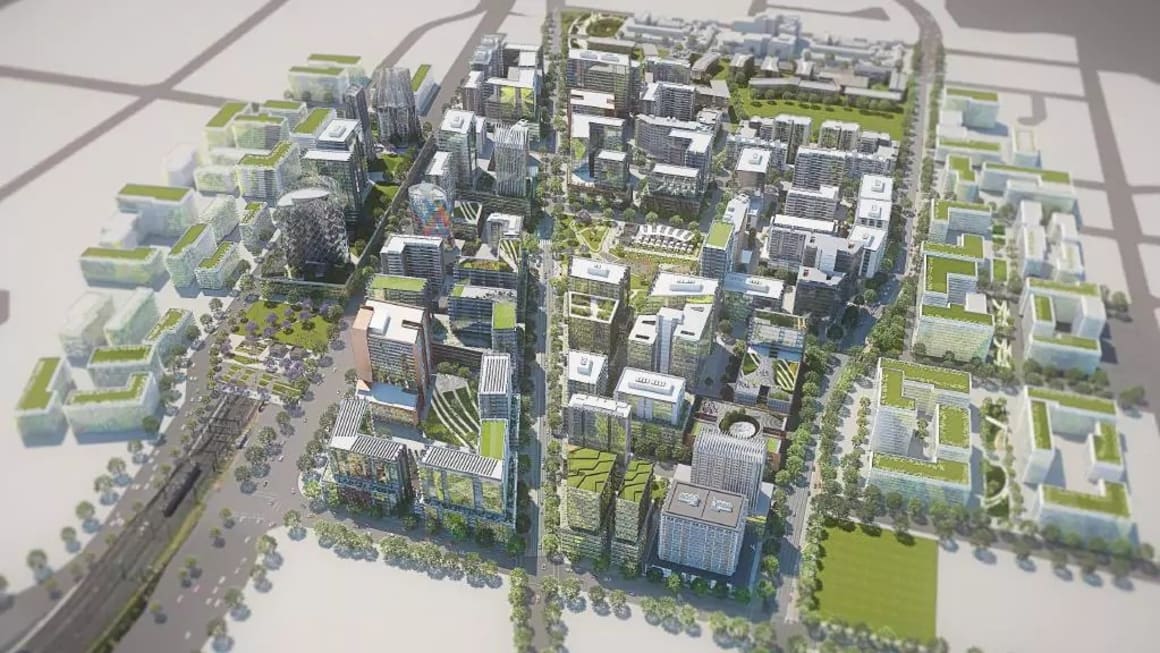Campbelltown takes its urban future into its own hands

Campbelltown has announced itself as the latest Australian city to pursue a high-density future.
The Re-Imagining Campbelltown strategy which was formed jointly by Council and Deloitte was handed down this week before the New South Wales parliament. In Sydney's southwestern suburbs, Campbelltown is well positioned to leverage off the forthcoming Western Sydney Airport.
Under Council's vision, Campbelltown would become the nation's greenest city, underpinned by the target of generating 200,000 new jobs across the immediate region, which includes a new 400-hectare health and education precinct.
For the most a low-rise city centre, Council's plans to transform Campbelltown into a high-density enclave revolves around the following transport and built form principles:
- Continuing to facilitate urban renewal along key transport corridors to accommodate population growth and reduce sprawl and isolation
- Realise the expansion of the local street network by creating new streets where development lots can be broken down to provide greater connectivity and walkability
- Realise Over Station Development (OSD) that provides greater connectivity and access to services across the rail corridor
- Locate major university campuses to within the CBD
- Encourage diversification of residential stock in and around the CBD to increase affordability and choice, including shop-top housing typologies
- Ensure technology is embedded in all urban transportation creating an interconnected network of mobility and seamless connections with other modes
- Decouple car parking from new developments to encourage less basements
The facilitation of increased density across Campbelltown will see towers up to 20 levels mandated.
Hand in hand with Council's bid for increased urban density comes an understanding of the need for heightened sustainability. Further key environmental initiatives have been identified that would allow increased density to occur, they include:
- Continuing to implement Blue and Green Grid projects supporting the revitalisation and naturalisation of the existing canal network
- Encourage buildings to continue to be retrofitted to provide sustainable energy solutions, evacuated waste systems and green façades to become a carbon neutral CBD
- Encourage greening and activation of roofs to provide facilities and open spaces for residents and workers
- Continue to retrofit and widen streets, create storm-water creeks along footpaths to facilitate greening and improve canopy cover and activation strategies throughout the CBD
Council's vision would boost Campbelltown Centre's present population from 11,500 to a forecast 35,500. For this to occur dwellings would balloon from a current 5,000 to 16,000.
Peak industry body Urban Taskforce Australia's response to the Campbelltown's rebirth was positive, citing the proposed Western Sydney Airport as the catalyst for change:
Clearly Campbelltown Mayor, George Brticevic, and General Manager, Lindy Deitz, are responding to the recently announced City Deal for Western Sydney and the economic stimulus that is flowing from the proposed Western Sydney Airport.
It seems that the proposed Aerotropolis related to the Western Sydney Airport will not be a city centre in the traditional sense but more a centre for jobs. This will then drive a competitive approach from surrounding centres like Penrith, Liverpool and Campbelltown to each establish themselves as urban centres with their own jobs and with significant urban living in apartments.
The re-imagine Campbelltown model that creates sufficient urban density to generate cafes, restaurants, amenities and jobs all located in walking distance to the railway station is likely to be taken up by other centres around the proposed airport but each will develop its own character.
Urban Taskforce Australia CEO, Chris Johnson
Further reading on Campbelltown's proposed transformation can be seen here.